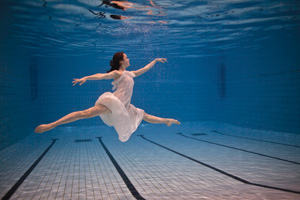The Fluidity of Dance
Each week a group of teacher candidates is tasked with designing and facilitating a cross-curricular dance lesson.
Our group chose to design a lesson for our classmates that was cross-curricular with the grade 5 science unit on 'Properties of and Changes in Matter'. We thought it would be a great opportunity for students to demonstrate their understanding of the differing formations molecules take depending on their state.
It also allows students a little more freedom and creativity than they may normally provided in STEM subjects.
We prompted the lesson by showing this short video of the different states of matter. The students were then tasked with designing a small individual movement phrase demonstrating one change in state and then combining with peers to create a larger movement phrase demonstrating changes in state from gas to liquid to solid.
It was exciting to see the different ways students (teacher candidates) visualize the movement of molecules. We also discovered it would be a great assessment piece that could be used to gather understanding and could replace a more traditional assessment type such as a quiz or written task.
After each group had a few minutes to design and practice their movement phrases, we asked them to try practicing it backwards (solid to liquid to gas). After the students had sufficient practice time we had each group present their movement phrase both forwards and backwards and explain the choices they had made. We chose to incorporate retrograde to demonstrate how we would use elements of dance to connect to continuation in the science curriculum. The lesson was designed around specific expectation 3.2 "identify properties of solids, liquids, and gases"; the introduction of retrograde was designed around specific expectation 3.4 "describe physical changes in matter as changes that are reversible" to be explored more deeply in the following science lesson.
Click here to see the slideshow used to guide students through the lesson!
Click here to see the full lesson plan!

Comments
Post a Comment